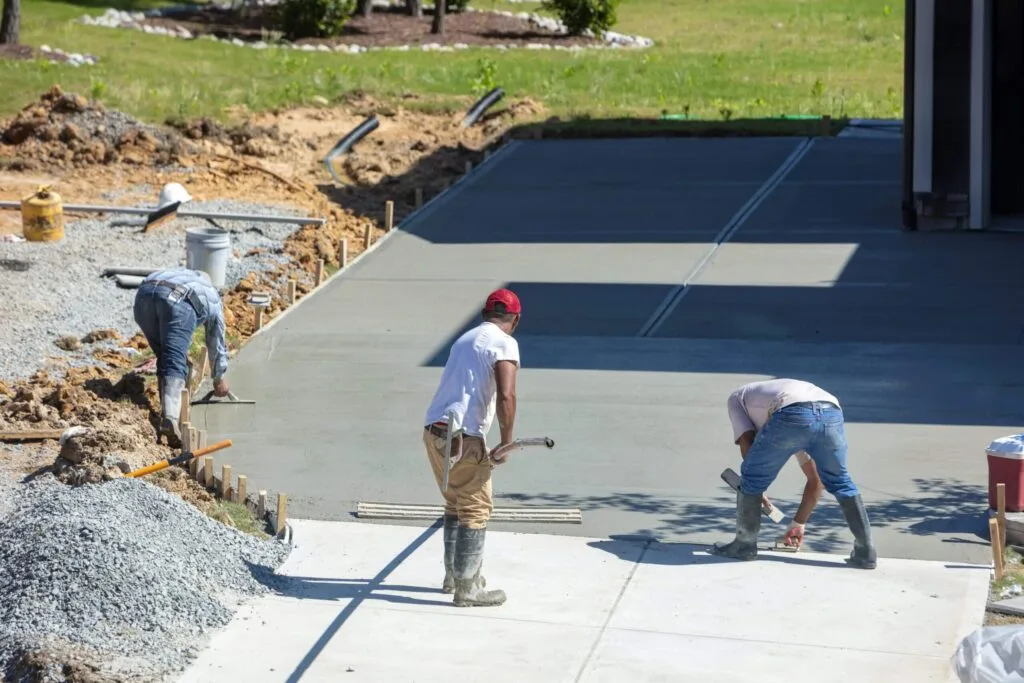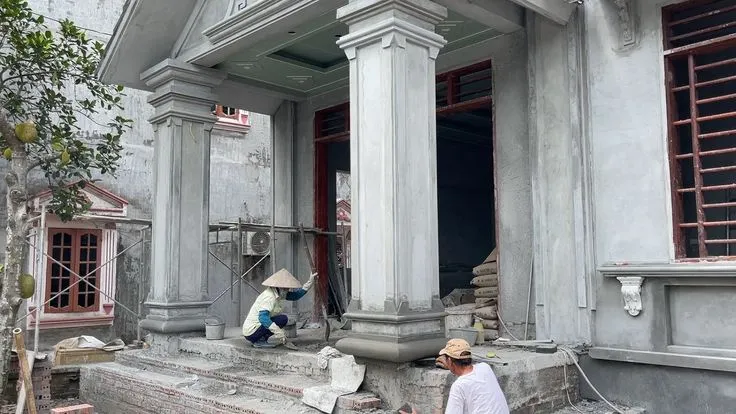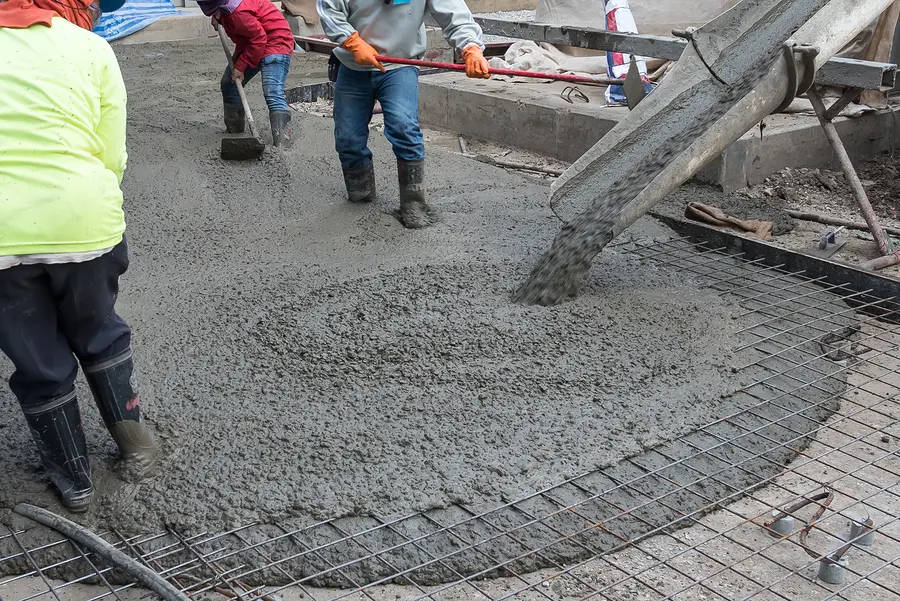Why does concrete procedure play a significant role?
Concrete procedures arPompPompano'smpano's construction landscape. They ensure that buildings and infrastructure are built to last, withstanding the region's unique environmental factors, such as hurricanes and flooding. Proper concrete procedures also contribute to the city's sustainability efforts, reducing the need for frequent repairs and maintenance.
C. Significance of Construction and Infrastructure in Pompano
construction has a significant role. Pompano'sBridgesPompano's construction considerable construction and infrastructure development are integral to its growth and prosperity. They facilitate economic development, attracting businesses and creating job opportunities for residents. Additionally, well-maintained infrastructure enhances the quality oPompano'sr Pompano's residents, providing essential services and improving transportation efficiency.
Pompano Beach's future relies on robust concrete procedures and continued investment in construction and infrastructure. The city can ensure sustainable development and a thriving community for future generations by prioritizing these aspects.
Infrastructure Development
Infrastructure development is crucial for the growth and functionality of any community. In this overview, we'll explore the importance of road construction and repair, bridge and overpass maintenance, and utility installations and repairs in ensuring the smooth operation of essential services and transportation in a city.
A. Road Construction and Repair
Roads serve as a city's lifeline, facilitating the movement of people and goods. Proper road construction and timely repairs are essential to ensure safety and efficiency. Maintaining the integrity of the road network requires regular maintenance, which includes everything from patching potholes to resurfacing key thoroughfares.
B. Bridge and Overpass Maintenance
These bridges Pompano'srThisBridges and overpasses are vital to connecting different parts of a city and facilitating traffic flow. Regular inspections and maintenance help ensure their structural integrity and safety. To avoid mishaps and interruptions, this includes painting, fixing concrete, and checking for wear and tear to prevent mishaps and interruptions.
C. Utility Installations and Repairs
Utilities such as water, gas, and electricity are fundamental to daily life. Installing and maintaining utility infrastructure is essential for providing reliable services to residents and businesses. Whether it's laying new pipes, upgrading electrical systems, or repairing water mains, these efforts ensure the uninterrupted flow of essential resources.
Infrastructure development encompassing road construction and repair, bridge and overpass maintenance, and utility installations and repairs are critical for maintaining a city's infrastructure's functionality and safety. By prioritizing these efforts, communities can thrive and effectively meet their residents' needs.
Building Construction
The development of buildings has a significant impact on the economy and landscape of an area. This overview will highlight the significance of residential developments, commercial properties, and industrial facilities in driving growth and providing essential community spaces.
A. Residential Developments
Residential developments cater to the housing needs of individuals and families, offering various housing options from single-family homes to apartment complexes. These projects provide shelter and contribute to the social fabric of neighborhoods, fostering a sense of community. From affordable housing initiatives to luxury residences, residential construction projects aim to meet diverse housing demands and enhance the quality of life for residents.
B. Commercial Properties
Commercial properties encompass retail outlets, office spaces, restaurants, and more. These developments serve as hubs for economic activity, attracting businesses and creating job opportunities. Whether a bustling shopping center or a modern office building, commercial construction projects are essential for fostering entrepreneurship and driving local economies forward.

C. Industrial Facilities
Industrial facilities, including factories, warehouses, and manufacturing plants, are the backbone of many economies, providing space for production, storage, and distribution. These facilities support various industries, from manufacturing and logistics to research and development. By investing in modern and efficient industrial construction, communities can strengthen their industrial base, attract investment, and stimulate job growth.
Building construction spanning residential developments, commercial properties, and industrial facilities shapes communities and businesses. Addressing. Through strategic planning and sustainable practices, construction projects can contribute positively to the prosperity and vitality of regions.
Environmental Factors
Understanding environmental factors is crucial in construction and infrastructure development to ensure durability and resilience against natural elements.
We'll discuss the consequences of high humidity and moisture content, exposure to saltwater and coastal environments, and hurricane and tropical storm effects on structures here.
A. Coastal Conditions and Saltwater Exposure
Coastal areas face unique challenges due to their proximity to saltwater bodies. Saltwater exposure can accelerate the corrosion and deterioration of materials, especially metals and concrete. Construction projects in coastal regions must utilize corrosion-resistant materials and protective coatings to mitigate the damaging effects of saltwater, ensuring the longevity of structures such as bridges, buildings, and seawalls.
B. High Humidity and Moisture Levels
Regions with high humidity and moisture levels pose challenges for construction projects, as excess moisture can lead to mold growth, rot, and structural damage. Proper ventilation, moisture barriers, and waterproofing techniques are essential to prevent moisture intrusion and maintain indoor air quality in buildings. Additionally, using moisture-resistant materials and implementing drainage systems help mitigate the risks of high-humidity environments.
C. Impact of Hurricanes and Tropical Storms
Constructing resilient buildings and infrastructure that can withstand wind loads and flooding is paramount in hurricane-prone regions. Reinforced foundations, storm shutters, and elevation above flood levels are effective measures to mitigate the impact of these extreme weather events.
addressing environmental factors such as coastal conditions, high humidity, and hurricanes is essential in construction and infrastructure planning to ensure resilience and longevity in the face of natural challenges. By incorporating appropriate design strategies and materials, communities can build structures that withstand environmental pressures and provide residents and infrastructure users with safe environments.
Regulatory Compliance
Compliance with regulations is crucial in construction and infrastructure projects to ensure safety, environmental sustainability, and adherence to legal requirements. Here, we'll explore the importance of building codes and standards, environmental regulations, safety guidelines, and inspections in maintaining regulatory compliance.
A. Building Codes and Standards
These regulations cover structural integrity, fire safety, accessibility, and energy efficiency. Compliance with building codes ensures that structures are built to withstand environmental stresses and provide safe and habitable spaces for occupants. Adhering to these standards also streamlines the permitting process and facilitates project approvals, promoting efficient and quality construction practices.
B. Environmental Regulations
Environmental regulations aim to mitigate the impact of construction activities on ecosystems, air and water quality, and natural resources. Compliance with environmental regulations involves erosion control, stormwater management, waste disposal, and habitat preservation. By incorporating environmentally friendly practices and technologies, construction projects minimize pollution and habitat destruction, contributing to sustainable development and ecological conservation.
C. Safety Guidelines and Inspections
Safety guidelines and inspections ensure that construction sites and completed structures meet stringent safety standards to protect workers, occupants, and the public. Safety regulations cover fall protection, electrical safety, hazardous materials handling, and emergency preparedness. Regulatory agencies often check construction sites to ensure safety regulations are followed. They also look for possible risks or flaws that need to be fixed. This helps to foster a safety culture and lowers the chance of accidents and injuries on building sites.
Regulatory compliance with building codes, environmental regulations, and safety guidelines is essential in construction and infrastructure projects to safeguard public health, protect the environment, and ensure the integrity and quality of built structures. By adhering to these regulations, stakeholders can mitigate risks, avoid legal liabilities, and contribute to sustainable and safe built environments.
Community Development
Community development initiatives are vital in enhancing the well-being and vibrancy of neighborhoods and cities. Here, we'll discuss the significance of implementing targeted development initiatives to improve public areas and inhabitants' quality of life and create a lively and resilient community.
A. Enhancing Public Spaces
Improving communal areas like parks, plazas, and leisure zones offers hospitable mingling, leisure, and repose settings. Investments in public spaces beautify neighborhoods, promote physical activity, and foster a sense of community pride. Features like playgrounds, green spaces, and public art installations enrich the cultural fabric of communities, making them more attractive and enjoyable for residents and visitors alike.
B. Improving Quality of Life for Residents
Community development initiatives aim to improve residents' quality of life by addressing critical social, economic, and environmental factors. Initiatives for affordable housing, job training centers, and assistance for small companies all help to promote social mobility and financial stability while enabling locals to live happy, meaningful lives and realize their full potential.
C. Fostering a Vibrant and Resilient Community
Community development efforts focus on building strong, connected, and resilient communities capable of adapting to challenges and seizing growth opportunities. Engaging residents in decision-making processes, promoting cultural diversity and inclusivity, and supporting community-based organizations strengthen social cohesion and resilience. Communities can overcome hardship and flourish in the face of change by establishing a feeling of shared ownership and belonging, making everyone's future more bright and resilient.
Community development initiatives centered around enhancing public spaces, improving residents' quality of life, and fostering resilience are essential for building thriving and inclusive communities. By prioritizing community-driven approaches and investing in sustainable development, cities can create environments where residents feel connected, empowered, and proud to call home.
Conclusion
PompanoIn conclusion, the importance of concrete procedures in Pompano cannot be overstated. They are integral to the city's development and infrastructure, ensuring stability and longevity in construction projects. Embracing these procedures is essential for continued growth and resPompano in Pompano.




